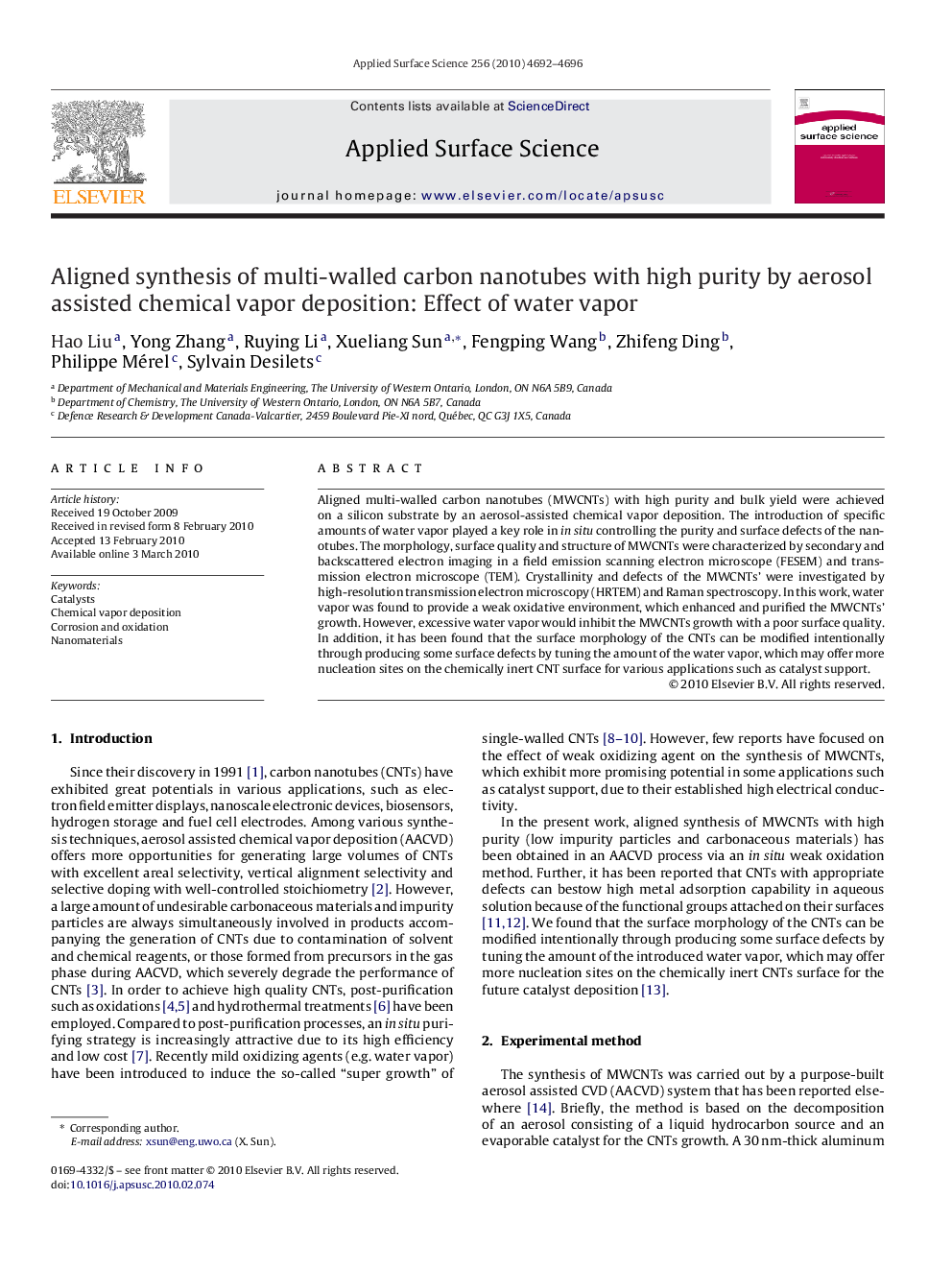| Article ID | Journal | Published Year | Pages | File Type |
|---|---|---|---|---|
| 5365730 | Applied Surface Science | 2010 | 5 Pages |
Abstract
Aligned multi-walled carbon nanotubes (MWCNTs) with high purity and bulk yield were achieved on a silicon substrate by an aerosol-assisted chemical vapor deposition. The introduction of specific amounts of water vapor played a key role in in situ controlling the purity and surface defects of the nanotubes. The morphology, surface quality and structure of MWCNTs were characterized by secondary and backscattered electron imaging in a field emission scanning electron microscope (FESEM) and transmission electron microscope (TEM). Crystallinity and defects of the MWCNTs' were investigated by high-resolution transmission electron microscopy (HRTEM) and Raman spectroscopy. In this work, water vapor was found to provide a weak oxidative environment, which enhanced and purified the MWCNTs' growth. However, excessive water vapor would inhibit the MWCNTs growth with a poor surface quality. In addition, it has been found that the surface morphology of the CNTs can be modified intentionally through producing some surface defects by tuning the amount of the water vapor, which may offer more nucleation sites on the chemically inert CNT surface for various applications such as catalyst support.
Related Topics
Physical Sciences and Engineering
Chemistry
Physical and Theoretical Chemistry
Authors
Hao Liu, Yong Zhang, Ruying Li, Xueliang Sun, Fengping Wang, Zhifeng Ding, Philippe Mérel, Sylvain Desilets,
